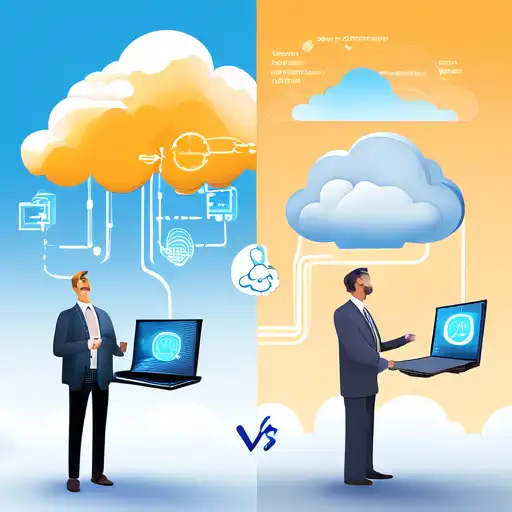Introduction to Edge and Cloud Computing
In the rapidly evolving world of technology, understanding the differences between edge computing and cloud computing is crucial for businesses and individuals alike. Both technologies play pivotal roles in data processing and storage, but they operate in fundamentally different ways.
What is Cloud Computing?
Cloud computing refers to the delivery of computing services—including servers, storage, databases, networking, software, analytics, and intelligence—over the Internet ('the cloud') to offer faster innovation, flexible resources, and economies of scale. Users typically pay only for the cloud services they use, helping lower operating costs, run infrastructure more efficiently, and scale as their business needs change.
What is Edge Computing?
Edge computing, on the other hand, is a distributed computing paradigm that brings computation and data storage closer to the location where it is needed, to improve response times and save bandwidth. The goal of edge computing is to process data near the edge of your network, where the data is being generated, instead of in a centralized data-processing warehouse.
Key Differences Between Edge and Cloud Computing
- Location of Data Processing: Cloud computing processes data in centralized data centers, whereas edge computing processes data locally or near the source of data generation.
- Latency: Edge computing significantly reduces latency because data doesn't have to travel long distances to a central server for processing.
- Bandwidth Usage: By processing data locally, edge computing reduces the amount of data that needs to be sent to the cloud, thereby saving bandwidth.
- Security: Edge computing can offer enhanced security for sensitive data by keeping it closer to its source and reducing exposure to potential breaches during transmission.
Choosing Between Edge and Cloud Computing
The choice between edge and cloud computing depends on the specific needs of a business or application. For applications requiring real-time processing and low latency, edge computing is often the better choice. However, for applications that require vast storage and computing power, cloud computing remains the go-to solution.
Future Trends
As technology continues to advance, the lines between edge and cloud computing may blur, with hybrid models becoming more prevalent. These models aim to leverage the strengths of both computing paradigms to offer more flexible and efficient solutions.
For more insights into the latest technology trends, check out our technology trends section.
Conclusion
Understanding the differences between edge computing and cloud computing is essential for making informed decisions about which technology to adopt for specific applications. While cloud computing offers scalability and flexibility, edge computing provides speed and efficiency for localized data processing. The future likely holds a place for both, as they complement each other in the broader technology ecosystem.
